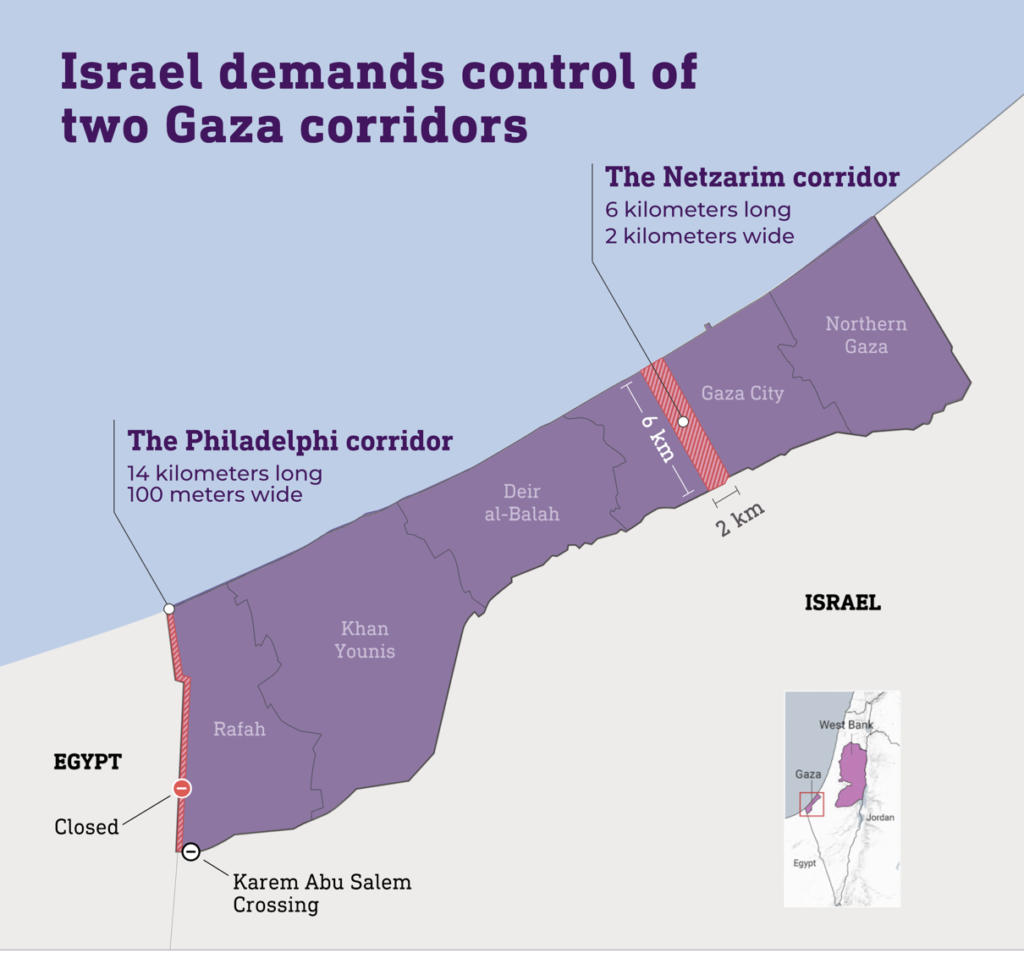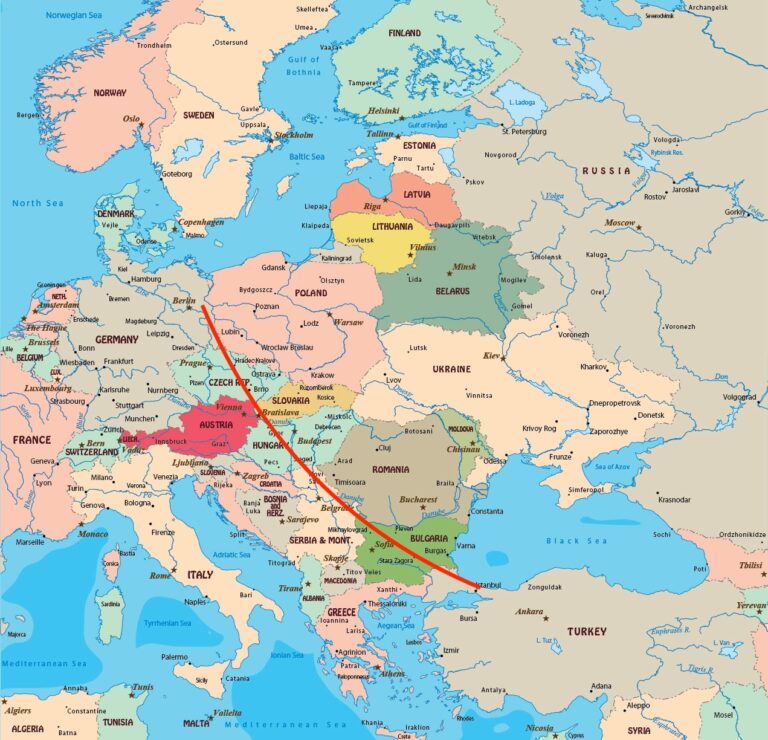By Andrea Tucci,
Negotiations for an end to the ten-month-long war in Gaza have recently centred around two buffer zones controlled now by Israel’s military.
The first, the Philadelphi Corridor, a buffer zone between Egypt and Gaza, has existed for more than four decades, and has been maintained on the basis of two bilateral agreements between Cairo and Israel.

Netzarim the other Corridor, cuts through central Gaza, and is been created in recent months by Israeli forces to monitor Palestinians.
The Philadelphi Corridor is a 14km-long, 100 metre-wide demilitarised buffer zone that runs along the entirety of the boundary between Egypt and Gaza.
It was first set up under a 1979 peace treaty between Egypt and Israel.
The corridor includes also the Rafah crossing, the only transit point between Egypt and Gaza.
Under the 1979 agreement, Israel was allowed to deploy limited armed forces in the corridor, along with UN observers.
The stated aim of these Israeli forces was to stop weapons from entering Gaza via Egypt. In 2005, Israel withdrew its armed forces from Gaza and from the Philadelphi Corridor as part of a “disengagement plan”.
Under this agreement signed between Egypt and Israel, Egypt would be allowed to deploy 750 border guards to patrol the corridor for counter-terrorism and non-military purposes., that included prevention of smuggling and infiltration.
Two years later, Hamas took full control of the Gaza Strip. Since then, Israel has enacted a land, air, and sea blockade of the Gaza Strip.
The Rafah crossing was the only entry and exit point into the besieged enclave not controlled by Israel -but that changed earlier this year.
In January Israel declared that aim of re-occupying the buffer zone and Egypt responded by stating that such an action would violate the 1979 treaty between the two countries.
After months of threatening a ground operation in southern Gaza’s Rafah, Israel seized control of the Palestinian side of the Rafah crossing on 7 May.
Days later, it seized the Palestinian side of the Philadelphi Corridor too, marking the first Israeli troop presence in the buffer zone since 2005.
The Netzarim Corridor is a 6km stretch of land that divides northern and southern Gaza.
It was established by Israel’s military during the current war and stretches from the Israeli boundary with Gaza City to the Mediterranean Sea.
The Netzarim route consists of military bases and is used by Israeli forces to monitor and control the movement of Palestinians between northern and southern Gaza. It has also been used to launch military operations.
The newly-created corridor is an attempt to continuously dictate life in Gaza beyond the war, without necessarily occupying the entire territory.
Israel said that will retain military control of both corridors, as well as the Rafah crossing, and has added those demands into ceasefire negotiations, but these conditions DID NOT feature in a ceasefire proposal endorsed by US President Joe Biden in a speech on 31 May, and a subsequent UN Security Council resolution on 10 June.
Infact, both the Security Council resolution and the Biden-approved plan referred to negotiations that would lead to the complete withdrawal of Israeli forces from Gaza.
Israel has referred to its new demands on the Philadelphi and Netzarim corridors as “clarifications” to the earlier Biden-endorsed proposal.
Hamas had already welcomed the Security Council Resolution and “confirmed its readiness for immediate implementation” in early July, contrary Israel responded with massacres and killings and “new conditions” including NOT withdrawing from the two corridors and the Rafah crossing, inspecting displaced Palestinians returning to northern Gaza, and changing the terms of an agreed prisoner exchange deal, among other alterations.
This strategy risks jeopardizing the ceasefire negotiations, exacerbating tensions with Egypt, and further intensifying the conflict with the Palestinians.
The issue of the corridors could therefore have significant consequences not only for the situation on the ground but also for the geopolitical balance of the region, making the search for a peaceful and lasting solution to the Israeli-Palestinian conflict even more complex.



